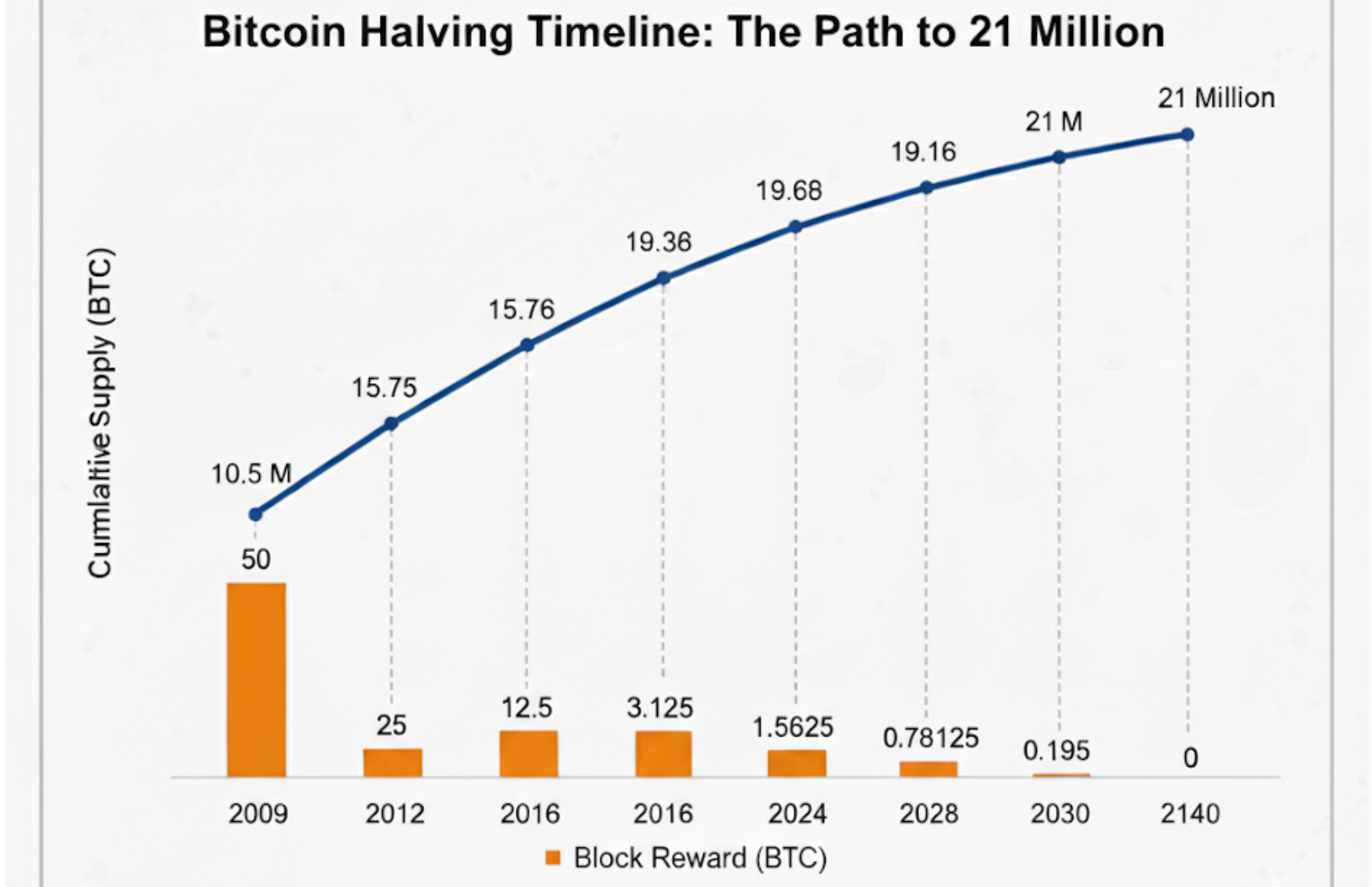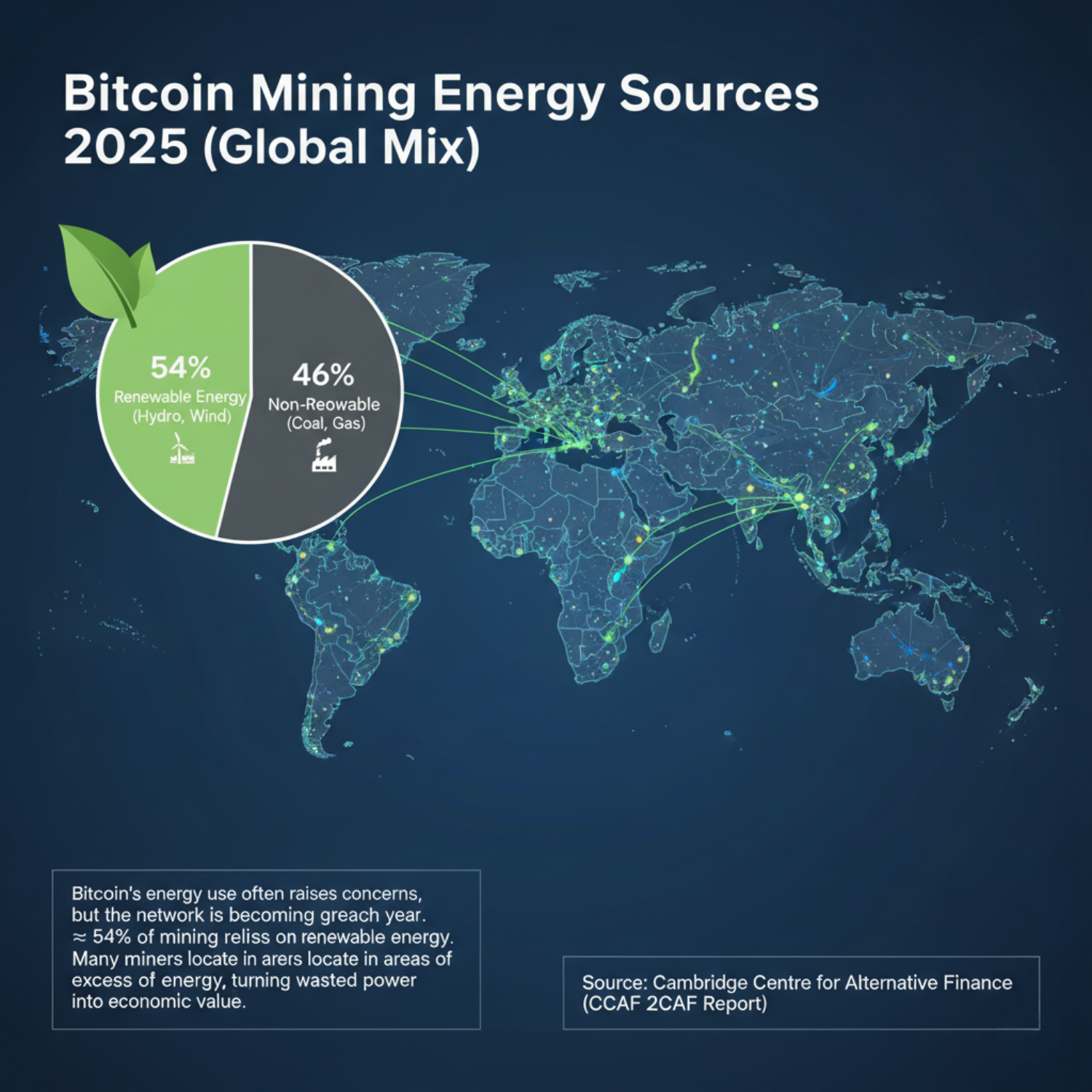
This content is for educational purposes only and should not be considered financial advice. Crypto investments carry risks, including loss of capital. Always do your own research or consult a licensed advisor before investing.
As of 2025, approximately 1.32 million BTC remain to be mined out of the fixed 21 million BTC supply. That means over 93 % of all Bitcoin has already been mined, and the remainder will enter circulation gradually until about the year 2140, as mining rewards keep halving every four years.
Bitcoin’s code permanently limits issuance to 21 million coins, a rule set by Satoshi Nakamoto to mimic scarcity similar to gold.
Unlike fiat currencies that central banks can expand, Bitcoin’s supply is predictable and deflationary. New coins appear at a fixed rhythm, shrinking every halving cycle.
This design makes Bitcoin immune to political monetary expansion and positions it as a store of value and hedge against inflation.

By October 2025, about 19.68 million BTC have been mined.
However, not all remain accessible: analysts estimate 3–4 million BTC are permanently lost due to forgotten keys or destroyed wallets, leaving only ≈ 15.5–16 million BTC effectively circulating.
Each 10 minutes a new block adds 3.125 BTC to supply, about 450 BTC per day, or ≈ 164 k per year.
Every Bitcoin block creates two income streams for miners:
As block rewards shrink with each halving, transaction fees will eventually become miners’ main source of revenue, ensuring the network remains secure after the final Bitcoin is mined.

Bitcoin’s inflation rate is now below that of gold (~1.6 %), making it the most predictable monetary asset ever created.
Roughly 1.32 million BTC remain unmined in 2025, less than 7 % of total supply.
Because halvings slow issuance, each new year adds fewer coins than the last.
At the current rate of 450 BTC/day, it takes about three years to mine just half a million more coins.
Bitcoin mining is performed by specialized machines (ASICs) connected to pools worldwide.
As of 2025:
Mining is now a high-efficiency industry focused on sustainability and energy optimization.
Bitcoin’s energy use often raises concerns, but the network is becoming greener each year.
Recent data from the Cambridge Centre for Alternative Finance (CCAF) shows that ≈ 54 % of mining relies on renewable energy, mainly hydro and wind.
Many miners now locate in areas with excess energy supply, turning otherwise wasted power into economic value.

Bitcoin uses Proof-of-Work (PoW). As more miners join, the network raises the difficulty target to keep block creation ≈ every 10 minutes.
This ensures a steady issuance rate and defends against network manipulation.
Every two weeks, difficulty re-adjusts automatically based on hash power.
Each halving cuts new supply by 50 %, reducing daily issuance pressure on the market.
Historically:
After each event, Bitcoin enters a growth phase as scarcity increases and investors anticipate lower future supply.
Blockchain analysis estimates 17 – 20 % of all BTC (≈ 3–4 million coins) are irretrievably lost, due to forgotten keys, hardware damage, or owner death without backups.
This reduces the effective maximum supply to around 17 million BTC, making each remaining coin even scarcer.
When block rewards end, miners will earn transaction fees only.
Network security will depend on:
Bitcoin’s protocol is self-adjusting and should remain stable even after new coins stop appearing.
Once you own BTC, self-custody is essential.
Traditional seed-phrase wallets can be risky if you lose your backup.
Modern solutions like Bleap’s MPC wallet use advanced cryptography to split your key into secure parts, so you stay in control without ever handling a seed phrase.
About 1.32 million BTC, less than 7 % of the total supply.
Around 2140, as block rewards keep halving until zero.
The limit prevents inflation and ensures scarcity, hard-coded into the protocol.
They’ll earn transaction fees instead of new coins for validating blocks.
Roughly 3–4 million BTC (≈ 17–20 %) are considered lost and unrecoverable.
By reducing new supply, halvings typically increase scarcity and long-term price pressure upward.
Bitcoin’s supply is mathematically finite, transparent, and self-regulated, qualities that no centralized currency possesses.
With over 93 % already mined, each remaining coin adds to its scarcity story. As halvings continue to reduce new issuance, Bitcoin becomes even more deflationary, cementing its status as digital gold and a hedge against monetary inflation.
Ready to own and secure your Bitcoin without seed-phrase risk?
👉 Create your free Bleap wallet today, non-custodial MPC security, free Mastercard, 2 % cashback, and zero FX fees.
Features
Improvements
Bug fixes